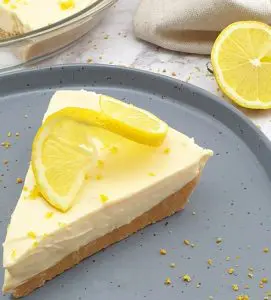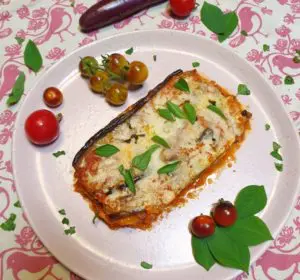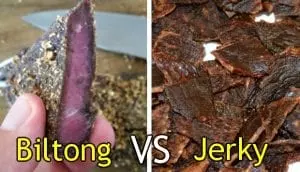When I think of beetroot I can’t go past a hamburger with the lot and for me the sweetly pickled taste of the sliced beetroot mixing with the pineapple, lettuce, cheese, fried onions, egg – soft yolk, and of course the burger meat with some BBQ sauce on a buttered bread roll, is what nails the whole thing down. Just be careful one of those crimson slices doesn’t slip out the backend and go down the front of your shirt (especially if it’s a white top) because beetroot juice is awesomely messy!
But a burger is probably the worst example of how to use this wonderful vegetable because there are many other better examples of how beetroot can be prepared, cooked, and eaten. Beetroot can be oven roasted to give a gutsy earthy flavour, diced in salads (goes particularly well with feta cheese), pureed as a dip or sauce, or you can even use beetroot juice as a food colouring – like to make pickled eggs pink or red! Bottom line – there’s plenty of inventive ways to use the beet.
Massive beetroot! This beet weighed 2.2 kilograms (image below)

What is beetroot?
Beetroot is classed as a root vegetable just like carrots, swede, parsnip, and other root crops. Naturally, it’s the root that is mainly eaten, although, the young leaves are excellent used in salads or a stir-fry (as you would spinach or silver beet). 
Growing beetroot
Beetroot is one of the easiest vegetable crops to grow. It doesn’t usually get attacked by pests, it’s very disease resistant, and it tends to grow fast without too much care required. Beetroot will grow all year round in most moderate climates
There’s plenty of information available to find the best time of year for your location to grow beetroot – just look on the packet. However, there are some “funnies” people who are new to growing beetroot should know about and these are:
- Seed – The beetroot seed is a strange looking small pod which looks like a piece of broken cork from a bottle. Within this case are multiple plants so the recommendation is usually to sow them and then thin the small seedlings out when they emerge all bunched together. I generally sow the seed a bit wider than suggested at about 15 cm apart (roughly) and don’t bother thinning – I just let them grow naturally and harvest some smaller beets when they are ready to thin the crop out. The other advice often given about beetroot seed is to soak the seed in warm water overnight to enhance germination – I don’t do this either because I have found no germination problems sowing direct into the soil and keeping the ground moist until well established. Seed tape is a great way of sowing beetroot, by the way and if sown in rows a few weeks apart a steady crop is assured for months.
- Soil preparation and fertiliser – Beetroot likes an easy to penetrate sandy type soil which has been prepared earlier (preferably several weeks before) with a little organic matter (compost/manure). Having said that, beetroot will still grow well if the soil is a little heavy; and, if the ground happens to be a little nutrient depleted it can actually help with root development. Over fertilising beetroot is worse than under feeding because too much nutrients tends to develop lots of top leafy growth at the expense of the root.
- Management – I don’t believe extra fertiliser or additives are needed during the growing period but if the plants are looking lacklustre then a liquid feed of fertiliser and some seaweed mix may help get them back on track. The main thing I always do is ensure the water is kept up especially in freely draining soils and hot weather because letting the crop regularly wilt under water stress between drinks will end up producing low quality roots.
- Harvest – I touched on this already but harvesting whilst the plants are young and the roots small is a good way to thin the plants out making room for larger growth. The early harvests can be used as baby beets for pickling – wonderful – or just as standard sides for a meal/salads because the smaller sized beets are always sweeter than the larger. Let the others grow on and harvest at about 5 cm but this differs between varieties and some are best harvested at twice that size. However, and depending on the variety don’t let your beets get too big otherwise they will become too “woody” and not as good to eat.
Beetroot seed (image below)

Beetroot types
Most beetroots are red or dark purple; but, some are yellow, white, and red and white circles or bands. Regardless of the colour, they mostly taste the same as far as I’m concerned.
There are different shapes also with some round and others cylindrical – again there’s no real difference in taste but the cylindrical can be a little easier to prepare if slicing.
Some common varieties are: White; Golden Beet; Detroit Red; Derwent Globe; Bulls Blood; Cylindrica; Monorubra (cylindrical); and Early Wonder.
Preserving beetroot
One of the easiest vegetables to preserve is beetroot and it will also last in the crisper for several weeks without going soft – they will soften and deteriorate in a few days if left at room temperature so in the crisper is the best way to store them fresh.
Canned beetroot is a favourite on the supermarket shelf and preserving beetroot this way can be easily replicated at home without too much fuss at all. All that is required to make preserved beetroot are the following:
- Qty of freshly harvested beetroot (about 3 kgs peeled)
- 1 litre of plain vinegar ( I use the cheap stuff)
- 1.5 litres of water
- 1 x tablespoon of salt
- 1 x teaspoon of peppercorns
- 2 x cups of sugar
Place all the ingredients in a large pot and boil until a skewer can be pushed through the largest whole beetroot with only a little resistance (this should take about 1 to 1.5 hours).
Remove the beets and on a clean surface or plate slice them into thin slices a few mils thick (if the beets are small just keep them whole if you wish).
Pack tightly into sterilised jars and pour the hot pickling solution over to cover then place the lids on tightly and leave cool. The above recipe should make enough liquid and beetroot to fill about ten 300 mil jars; although, there is a possibility for some beetroot to be left over.
Preserved beetroot should keep in the pantry for about 6 to 12 months.

Beetroot preserved in 300 mil small jars (image above)
Notes:
1 – I peel my beetroot first before boiling but you can boil the clean beets in the pickling solution skin-on and then remove the skin after (it comes off easily).
2 – If slicing the beetroot whilst hot is causing handling issues then let the whole pot and contents cool before removing the beets, slicing, and packing into jars. Then, bring the pickling solution to the boil again and pour over the beets covering them before replacing the lids. The cooling of the liquid in the jar should cause a vacuum and seal the jar lid.
3 – If you have left over beetroot from this recipe it can be frozen in zip-lock bags and used for quick dinners or to puree up for a dip or soup etc.
4 – You can experiment with other spices and flavours but I have found this simple recipe to be just right for most people including myself and children.
Conclusion
So that’s how to grow beetroot and preserve it! If you would like to discuss this further you can write a short message below or even better you could join our forum to talk about beetroot or show off your beetroot growing prowess!
Mark Valencia – Editor SSM
Look, and see the Earth through her eyes…












